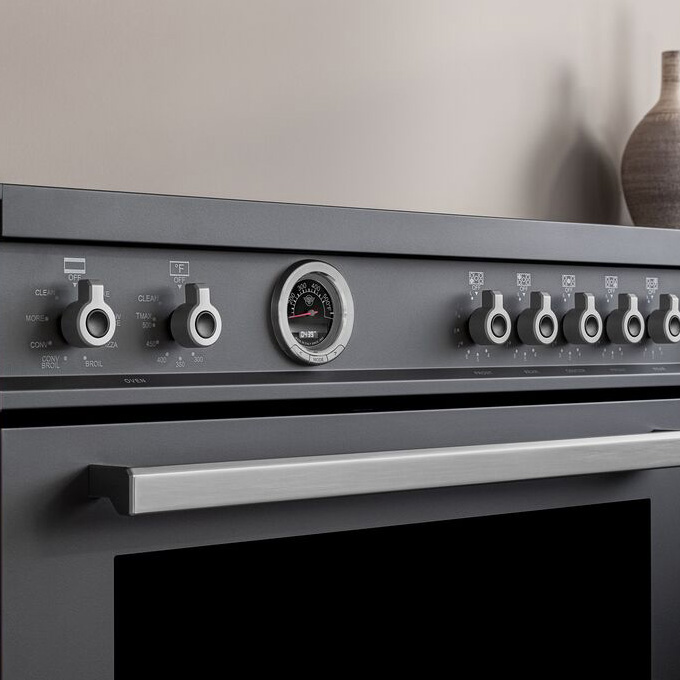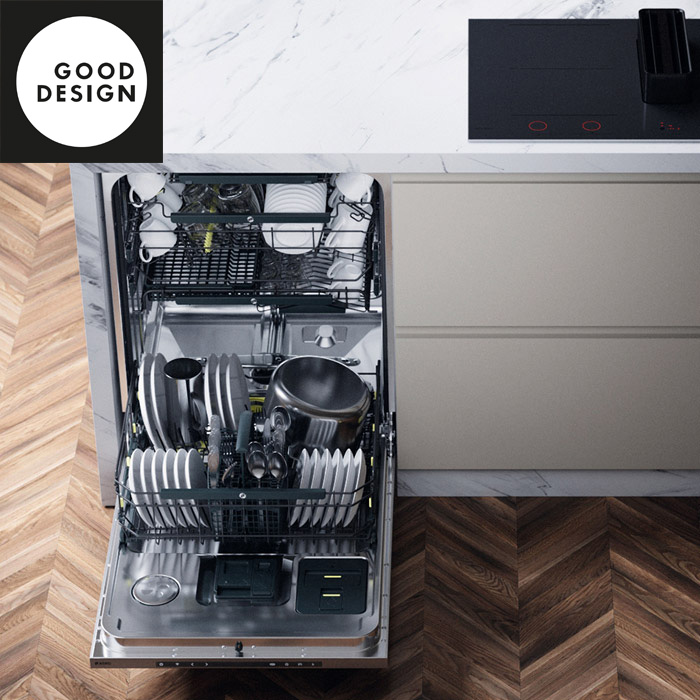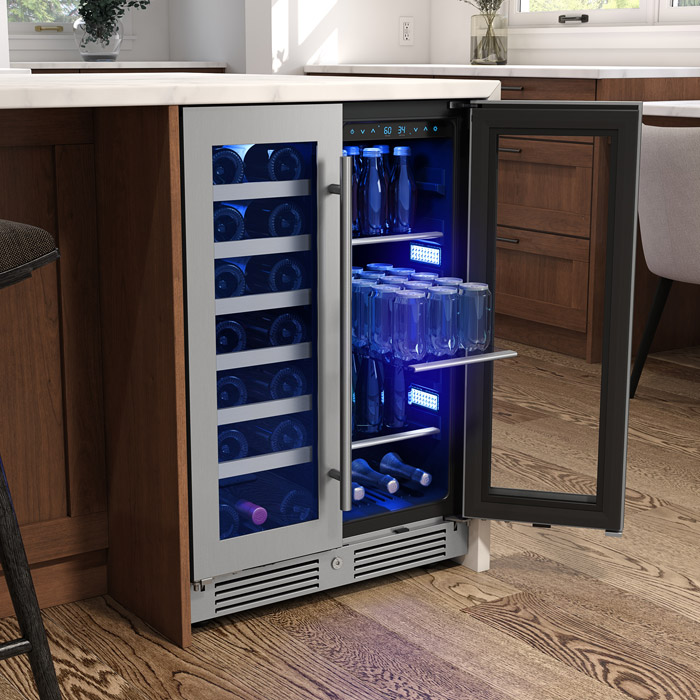
Looking for a new fridge?
05/04/2018
Your recipe for success in the kitchen starts with the right oven!
01/06/2018How to choose the best ventilation hood
Selecting the right ventilation hood is important for several reasons; it can extend the longevity of your cabinets, it can benefit the design of your kitchen and more importantly it removes unhealthy particles. However, the market for ventilations hoods may be overwhelming due to the variety of different types available. Here are your options:
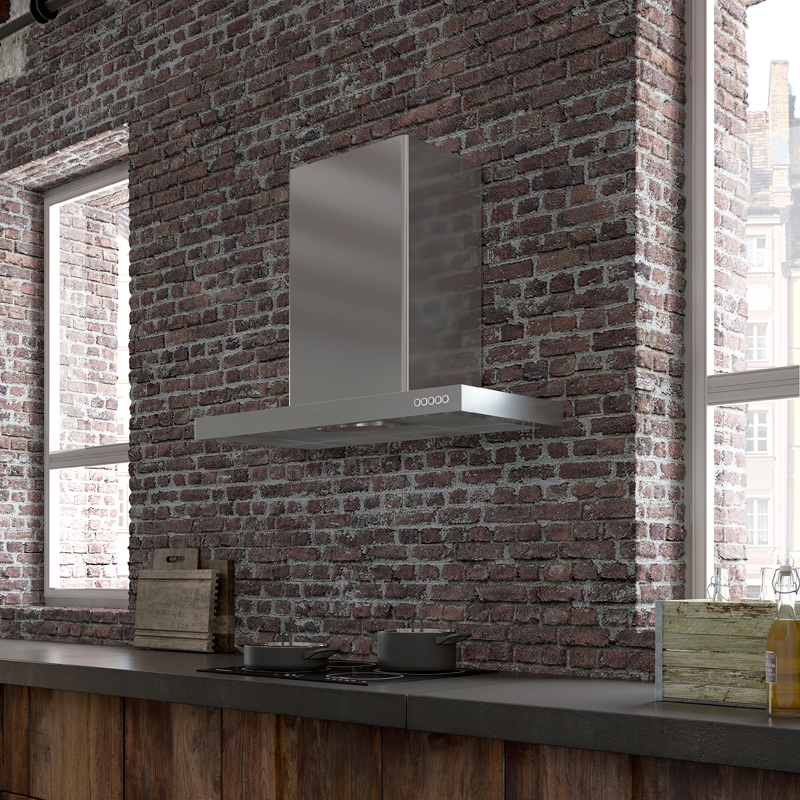
Types of hoods
If you’re replacing a range hood you may have to stay with the similar type, one that fits in the same space, but good news there are a lot to choose from. If you’re building a new kitchen then the possibilities are endless!Under cabinet range hoods are just as they sound, they are installed under your cabinet over the cooking products. The length should match the size of your cooking product to ensure it captures all the heat and smoke before it reaches your cabinets. Even though they install the same there are a variety of different styles and features.
Wall hoods are the most popular option when it comes to kitchen design, instead of having a cabinet in the space over the cooking vessel, the wall hood is installed. To be effective they should also be the width of your cooking product. However, the depth may vary depending on the design, so if your cooking power is gas you want the depth to cover up to the middle of the front burners. These hoods usually come with a standard duct cover for 8’ ceilings and for those with high ceilings extended duct covers can be purchased.
Island hoods can be very similar in design and appearance to wall hoods but are designed for installation in spaces where the cooking product installed in an island. If venting out the ducting will go between the joists of your home to a nearby wall or up to the roof. These tend to be more expensive, but many of them are designed to be especially beautiful and sleek looking. To ensure proper capture, your island hood must be 3” wider on all sides of your cooking product. For example, if your cooktop is 36” wide and 22” deep, your island hood should be 42” wide by 25” deep.
Insert hoods, operate the same as any range hoods, but they have been designed to insert into a custom canopy. They come in a variety of sizes and can be very affordable on their own, however depending on how extravagant your custom canopy is they can end up costing you more money.
Downdraft hoods are handy for those who want their range hood to stay visually out of the way whenever not in use. They’re connected to ducts beneath the floor which allow the smoke and air to exit in a downward direction. However, they are not recommended for cooking product that have a griddle or barbeque built in.
OTR – (Over The Range Microwaves) are not chosen for their effectiveness but more so because of restrictions in the kitchen and budget issues. These all in one units are not designed for any cooking unit that creates a lot of smoke.
Island hoods can be very similar in design and appearance to wall hoods but are designed for installation in spaces where the cooking product installed in an island. If venting out the ducting will go between the joists of your home to a nearby wall or up to the roof. These tend to be more expensive, but many of them are designed to be especially beautiful and sleek looking. To ensure proper capture, your island hood must be 3” wider on all sides of your cooking product. For example, if your cooktop is 36” wide and 22” deep, your island hood should be 42” wide by 25” deep.
Insert hoods, operate the same as any range hoods, but they have been designed to insert into a custom canopy. They come in a variety of sizes and can be very affordable on their own, however depending on how extravagant your custom canopy is they can end up costing you more money.
Downdraft hoods are handy for those who want their range hood to stay visually out of the way whenever not in use. They’re connected to ducts beneath the floor which allow the smoke and air to exit in a downward direction. However, they are not recommended for cooking product that have a griddle or barbeque built in.
OTR – (Over The Range Microwaves) are not chosen for their effectiveness but more so because of restrictions in the kitchen and budget issues. These all in one units are not designed for any cooking unit that creates a lot of smoke.
Features to look for in a hood
Now that you have chosen the type of hood that will work best in your design, you will realize choosing a hood from within that category can be daunting. So, depending on your cooking product and cooking habits here are a few questions that will help you narrow down your search:- Does your home allow you to vent outside? If no, then you will have to look for a hood that allows you to recirculate. This means you will have to replace carbon filters approximately every 3 months.
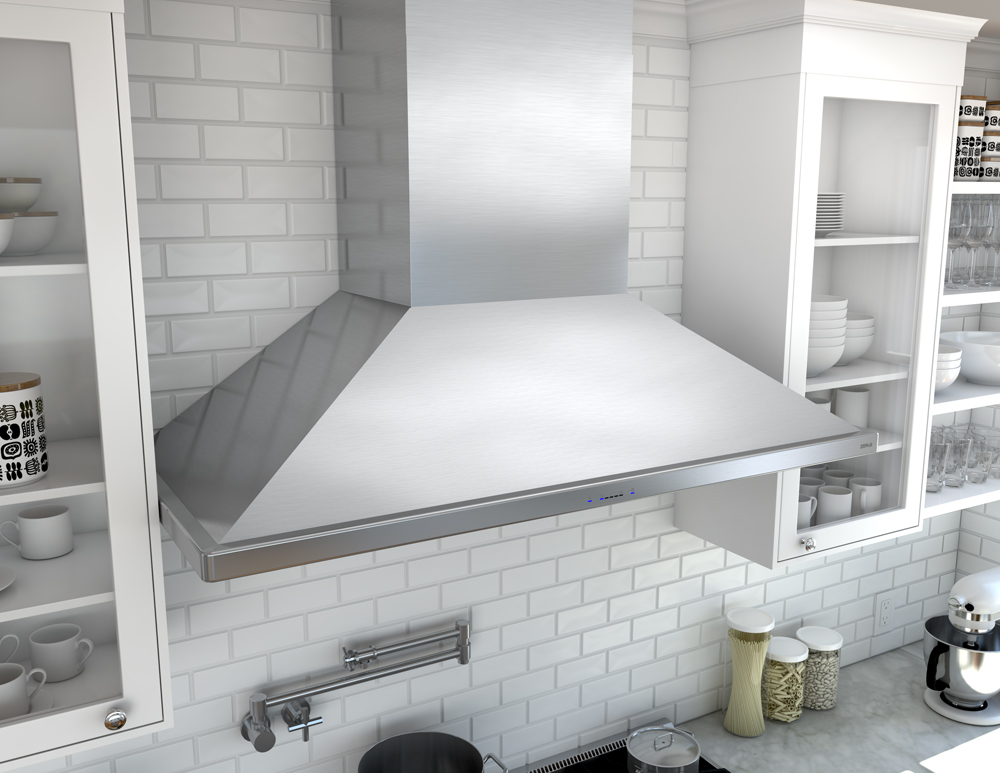
- If you plan to duct outside, you will need to know what your duct size is. This is important so your hood operates effectively and you don’t void your warranty.
- How do you want to capture the grease? Baffle filters, Mesh filters or Filter-less Self-Cleaning System.
- Depending on your cooking power, you will need to make sure the hood is strong enough. The higher the CFMs (cubic feet per minute) the stronger the motor. However, you want to make sure what you choose meets local building code requirements.
- What type of chef are you? If you love to cook aromatic foods than Auto Delay-Off might be important feature. It allows you to vent a certain time after cooking.
- Designing an open concept kitchen? You may want to look for a hood with noises dampening technology.
- Cleanability, do you want your hood to be fingerprint less?
- Cooking surface lights consideration; lighting from your hood can affect the overall design of your kitchen, so you need to decide if you want halogen, florescent or led.
- Type of controls: slider, push button, electronic and remote control.
- Material & colour options: stainless or glass and both can come in a several colours.
Whatever ventilation hood you choose it’s important that you speak with a ventilations specialist and read your installation manual as all hoods have specific installation requirements.
Technical
Baffle filters are the most durable and ideal for powerful cooking products as they capture grease and prevent duct fires. These stainless-steel filters work by forcing grease-saturated air to quickly and repeatedly change direction as it rises through the filter. They can be easily cleaned by placing them in your dishwasher.
Mesh filters typically consist of layers of fine metal mesh stacked on top of each other. They are less expensive than stainless baffles, however, due to the nature of the mesh they will have to be cleaned more frequently. They can go in your dishwasher but its recommended not to use detergent as they can cause the filters to discolour, other option is soak them in your sink with soap and water.
Filter-less Self-Cleaning System consists of blower system that automatically liquifies cooking residue in its internal housing. Its recommended that once a month under normal usage of 1 hour per day that the hood be cleaned. Degreasing cleaner is sprayed into the blowers and a dishwasher safe residue cups collects the cooking residue.
Mesh filters typically consist of layers of fine metal mesh stacked on top of each other. They are less expensive than stainless baffles, however, due to the nature of the mesh they will have to be cleaned more frequently. They can go in your dishwasher but its recommended not to use detergent as they can cause the filters to discolour, other option is soak them in your sink with soap and water.
Filter-less Self-Cleaning System consists of blower system that automatically liquifies cooking residue in its internal housing. Its recommended that once a month under normal usage of 1 hour per day that the hood be cleaned. Degreasing cleaner is sprayed into the blowers and a dishwasher safe residue cups collects the cooking residue.
The pro’s of each product category
Ventilation wall hoods can enhance your kitchen design.
Island hoods are a good option for when your cooking is installed in the island.
When you are unable to duct outside recirculating kits are great solution.
Downdrafts are designed to be hidden when not in use.
The con’s to keep in mind
Low CFM ventilation hoods are not effective for professional style ranges.
Downdrafts are not efficient enough for cooking products with a barbeque or griddle.
OTR have very low CFM so they are not ideal for gas ranges.
Ventilation hoods that need to duct to the roof require joist space.

